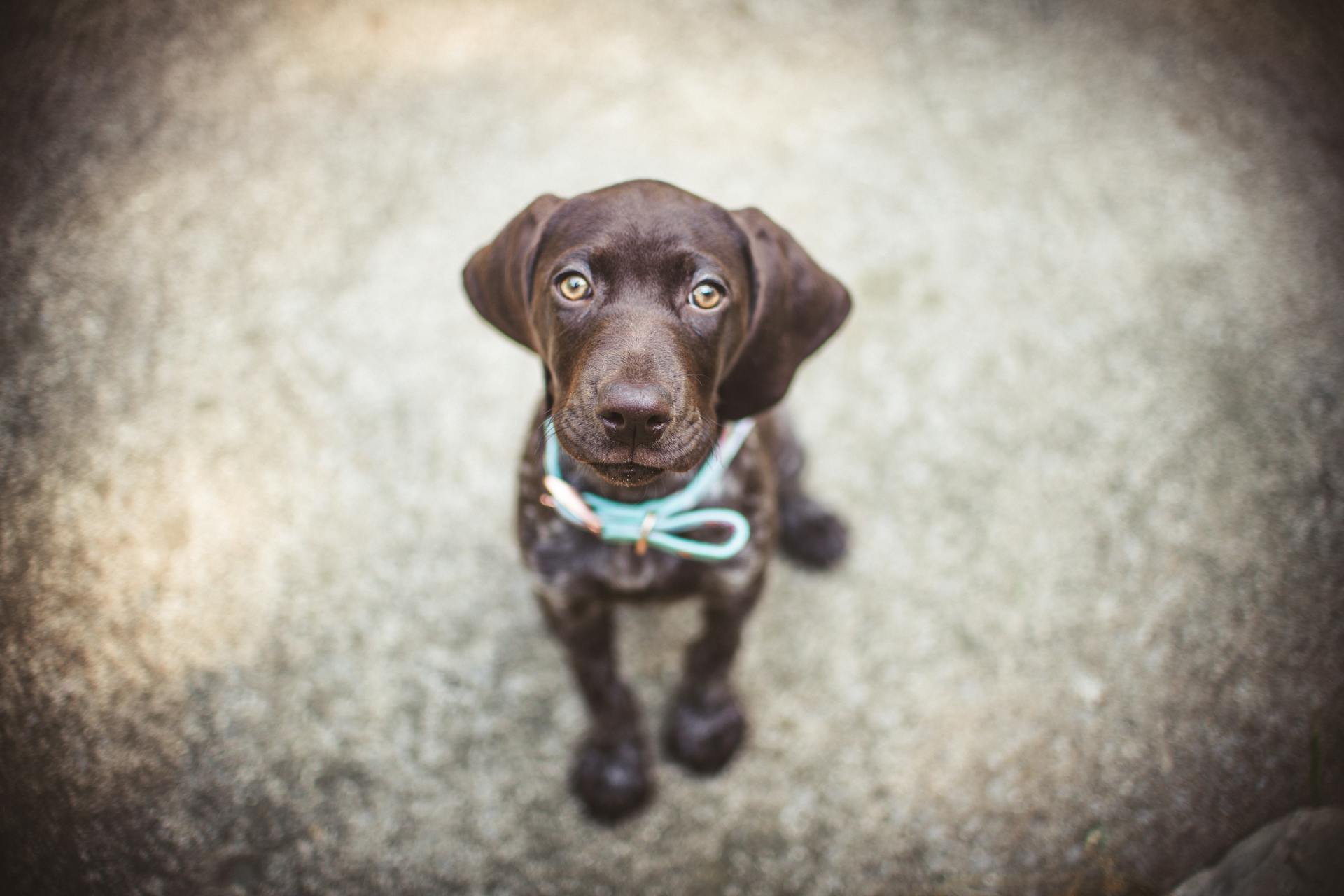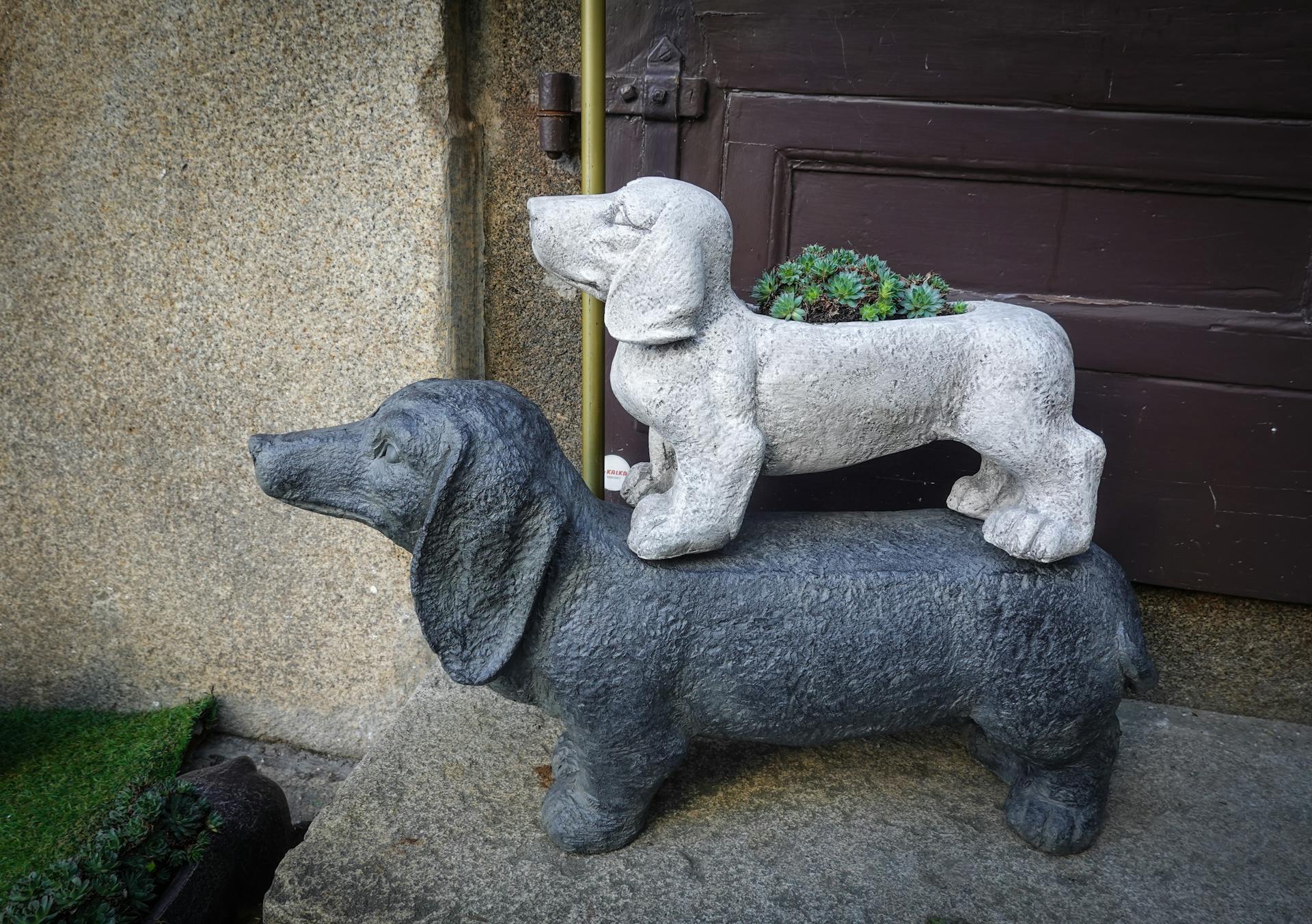
Dachshunds are a unique breed that requires special care. They were originally bred to hunt badgers and other burrowing animals, which means they have a strong instinct to follow their noses.
Their short legs and long bodies make them prone to back problems, so it's essential to provide them with a comfortable place to sleep and avoid over-exercising them when they're young.
Dachshunds are relatively low-maintenance dogs when it comes to grooming. They have a short, smooth coat that requires only occasional brushing.
Broaden your view: When Do Dachshunds Calm down
Health
Dachshunds are prone to back problems, specifically Intervertebral Disc Disease (IVDD), which can cause paralysis if not treated promptly. This is a common issue in the breed, with up to 25 percent of Dachshunds developing IVDD at some point.
Bloat is another serious health concern for Dachshunds, where the stomach twists on itself, causing life-threatening symptoms like pain, pacing, and drooling. If you notice any of these symptoms, get your dog to a veterinarian quickly.
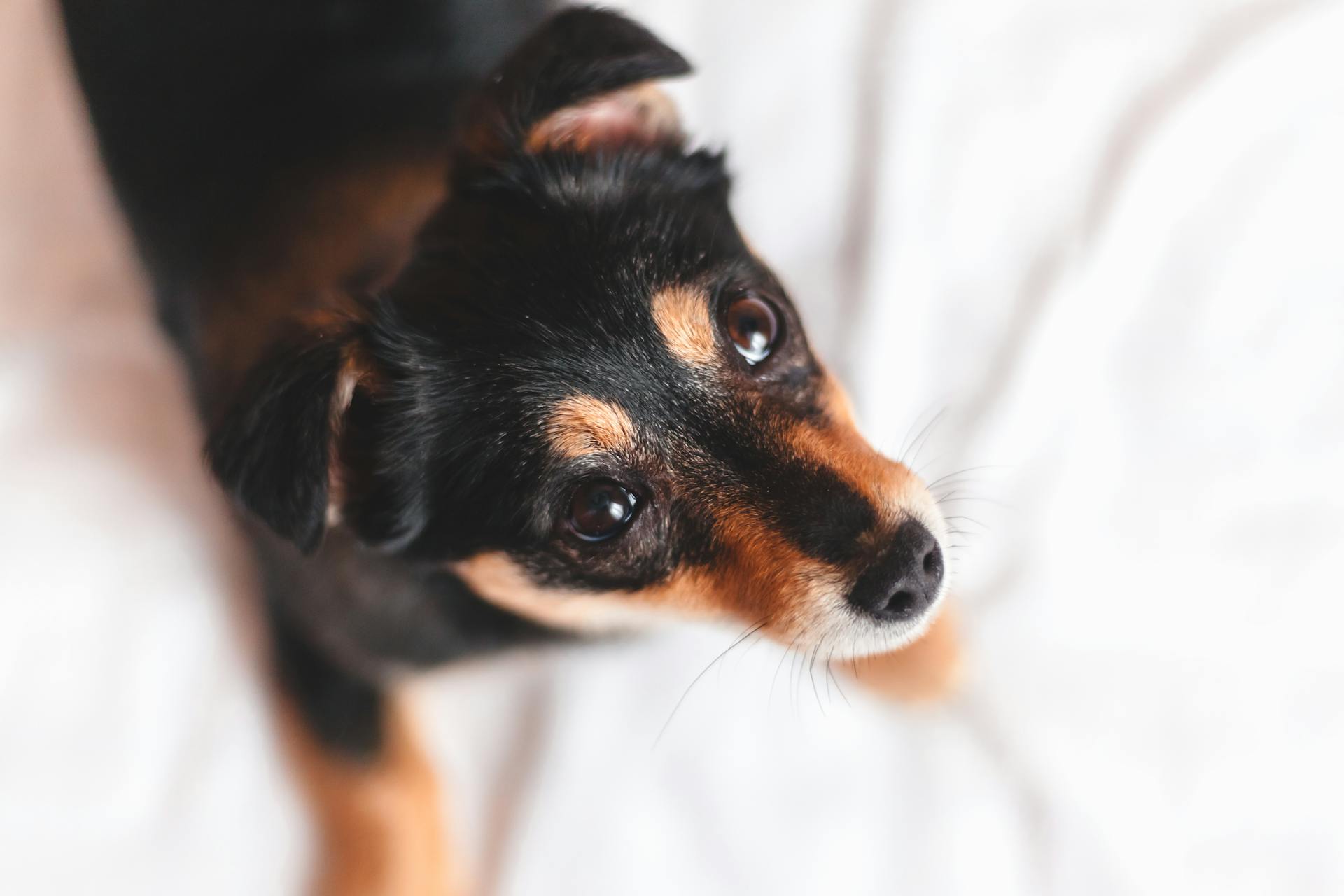
Deafness is also a possibility, especially in Dachshunds with dappled coat patterns. While there's no cure, deaf pups can live happy lives with proper care.
To keep your Dachshund's back healthy, avoid rough play and jumping, and always carry them by supporting their hind end and chest. Keeping them at a lean, healthy weight also helps prevent back issues.
Here are some common health issues to watch out for:
- Intervertebral Disc Disease (IVDD)
- Progressive Retinal Atrophy (PRA)
- Bloat
- Deafness
- Luxating Patella (kneecap slipping out of place)
- Epilepsy
- Eye problems (cataracts, glaucoma, PRA)
Breed Characteristics
Dachshunds are known for their unique body shape, with short legs and long bodies.
Their short legs may look weak, but they're actually quite powerful. This is because they were bred to hunt small prey in Germany, where they'd need to dig and tunnel quickly.
Dachshunds come in three varieties: smooth, wire-haired, and long-haired. Each variety has its own unique characteristics, including differences in coat style and color.
Here's a breakdown of the different sizes of Dachshunds:
Dachshunds have a range of coat colors and patterns, with over 20 variations to choose from. Some of the most popular colors include red, black, and tan, as well as dapple.
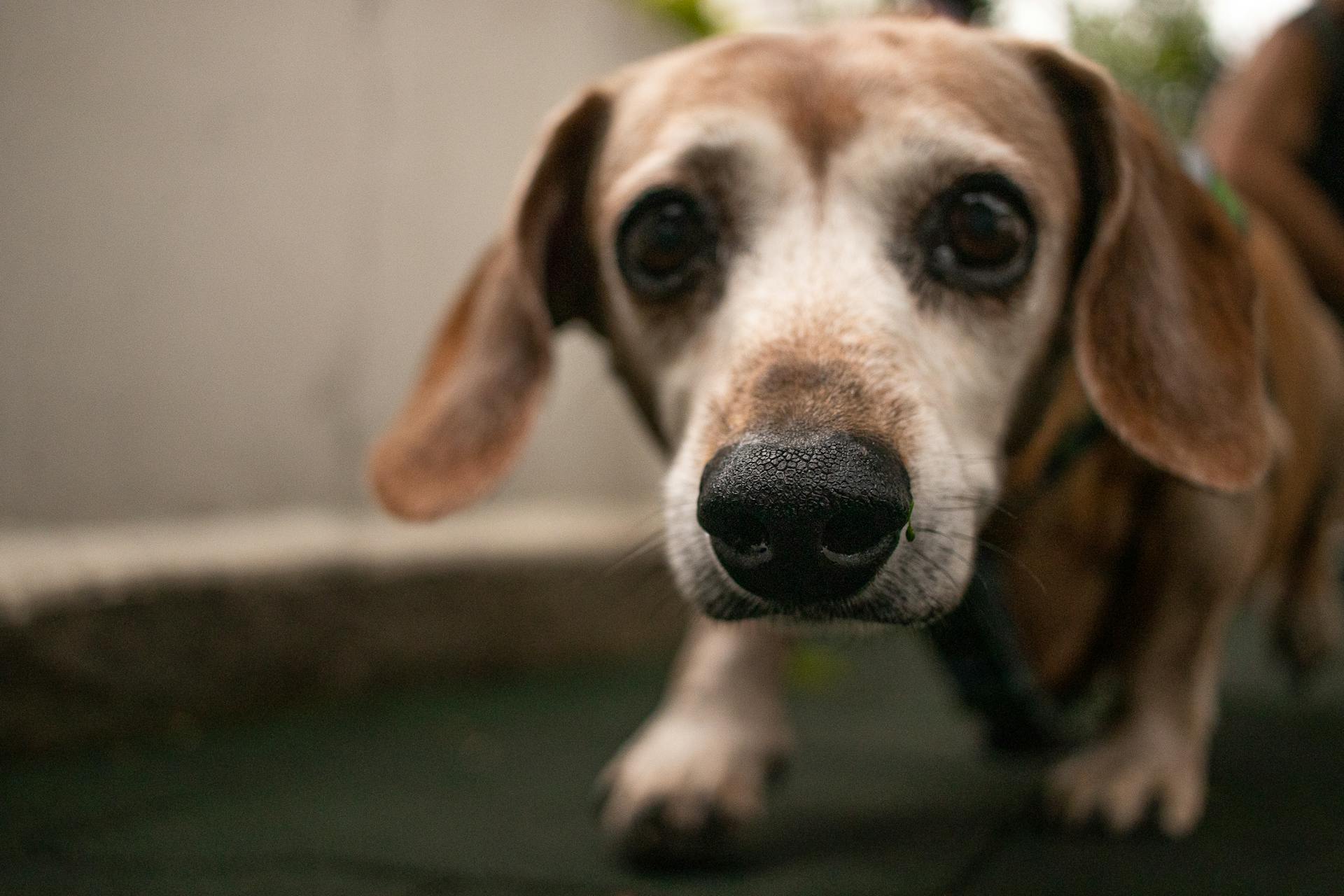
Their coats can also vary in style, with smooth-haired Dachshunds having short and shiny hair, long-haired Dachshunds having slightly wavy and long hair, and wire-haired Dachshunds having thick, short, and hard overcoats with soft undercoats.
Their unique body shape and powerful legs make them well-suited to digging and tunneling. In fact, their front paws are disproportionately large and paddle-shaped, making them perfect for digging burrows.
On a similar theme: Do Dachshunds Have Hair or Fur
Care and Maintenance
Dachshunds are relatively low-maintenance when it comes to grooming, but they still need regular attention to stay healthy and happy.
Their coats come in three varieties: smooth, long-haired, and wire-haired. The smooth coat is the easiest to care for, requiring only a quick going-over with a hound glove and soft brush.
Long-haired Dachshunds need frequent brushing to prevent knots and tangles, ideally 2-3 times a week. Wire-haired Dachshunds require stripping once or twice a year.
Dachshunds don't need to be bathed often, but their bellies may need more frequent brushing due to their low-to-the-ground bodies, which can pick up stickers or burrs.
Expand your knowledge: Do Long Haired Dachshunds Need Haircuts
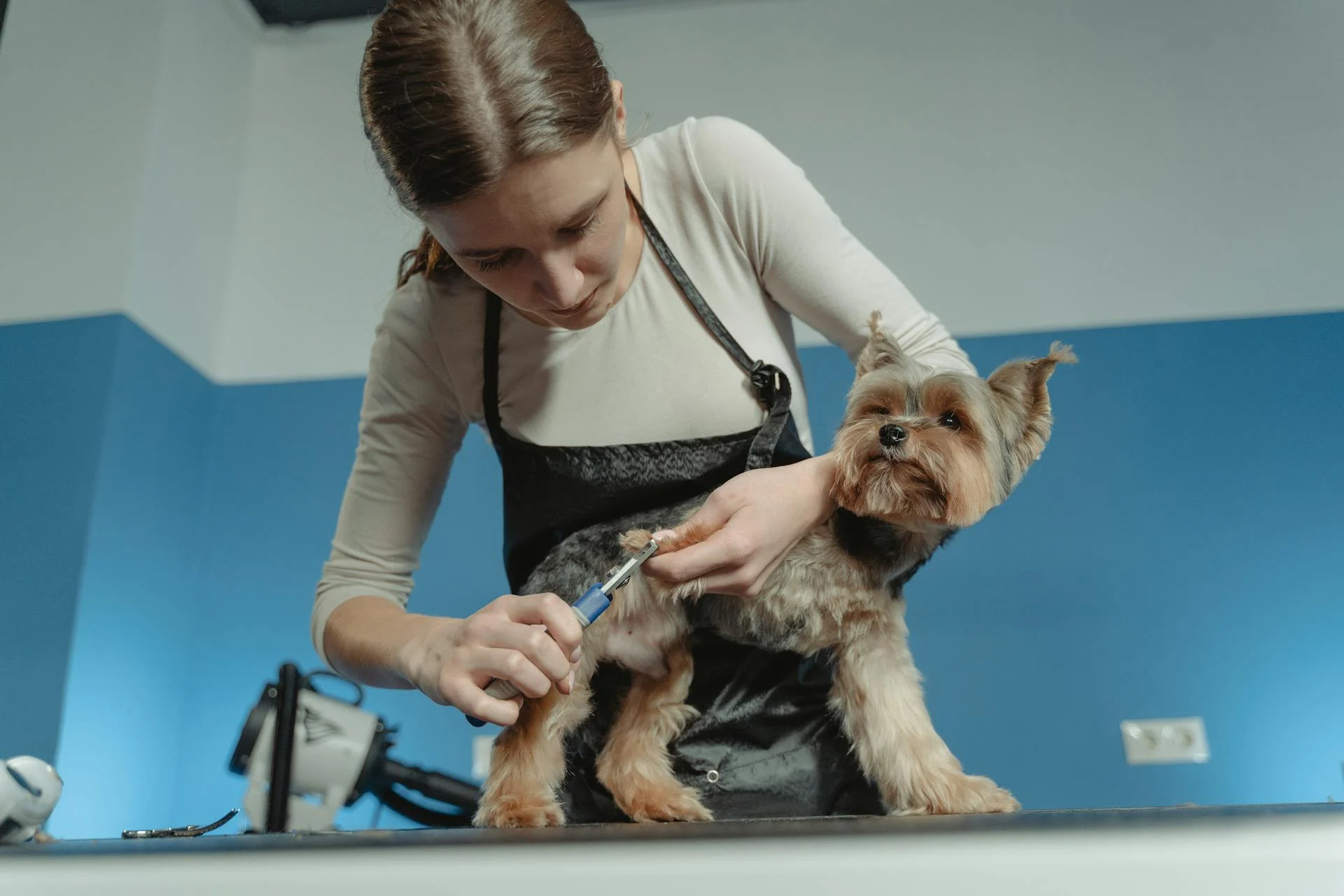
You should brush their teeth daily to prevent tartar buildup, and get their teeth professionally cleaned by your vet once a year. Start brushing their teeth while they're puppies to get them used to the experience.
Their nails need trimming about once a month, and you'll know it's time when you hear them tapping on your hardwood floors. You can also ask your groomer or vet for help with this.
Here's a quick rundown of their grooming needs:
Remember to wipe their ears at least once a week with a cotton ball to prevent infections.
Temperament and Behavior
Dachshunds are a lively and intelligent breed, but they can also be stubborn and difficult to housebreak. They may refuse commands, especially if they're chasing a small animal.
Their small size means they can get cold easily, and may require a sweater for winter walks. This is especially true for Smooth Haired Dachshunds.
Dachshunds are loyal to their human family, but may not get along well with other dogs or cats. They can be possessive of their toys and may try to be dominant.
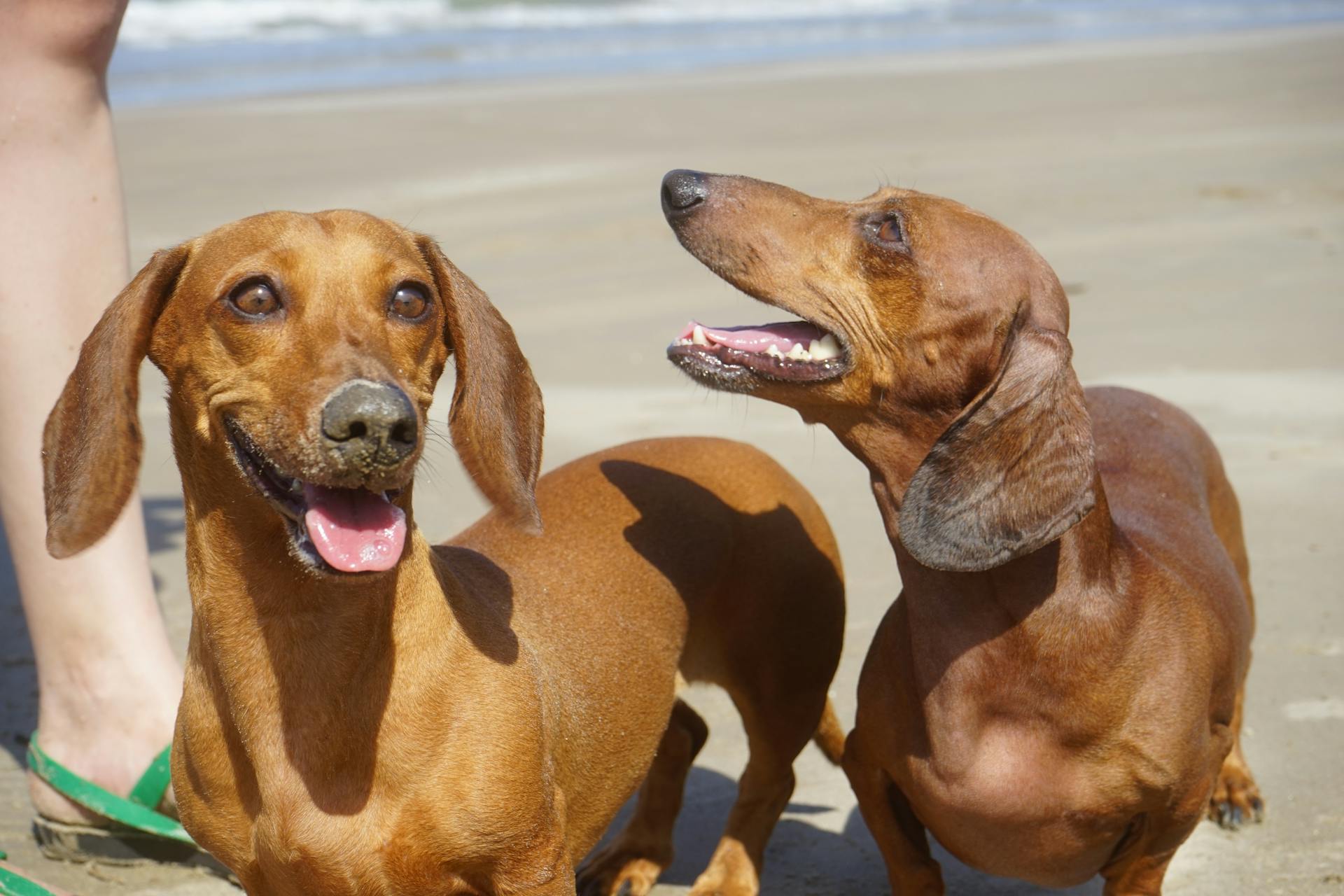
They love to spend time with their owner and can be quite needy, craving attention. If they start to feel lonely, they may bark.
Dachshunds have a keen sense for chasing smaller animals, which can make them a challenge to train. They may refuse to follow commands, especially if they're chasing something they want.
They can be aggressive to strangers and other dogs, and may need training to stop barking. Some Dachshunds may not bark much at all, but others can be quite loud.
Dachshunds are naturally protective of their family and can be great watchdogs. However, they may not be the best choice for apartment living due to their tendency to bark and chase small animals.
In the right home, Dachshunds can be a joy to have around. They're playful, kind, and loving companions who will keep you entertained with their antics.
Check this out: Do Dachshunds Bark a Lot
Diet and Nutrition
Dachshunds tend to have a good appetite due to their active nature, but obesity can be an issue, so be careful with their diet.
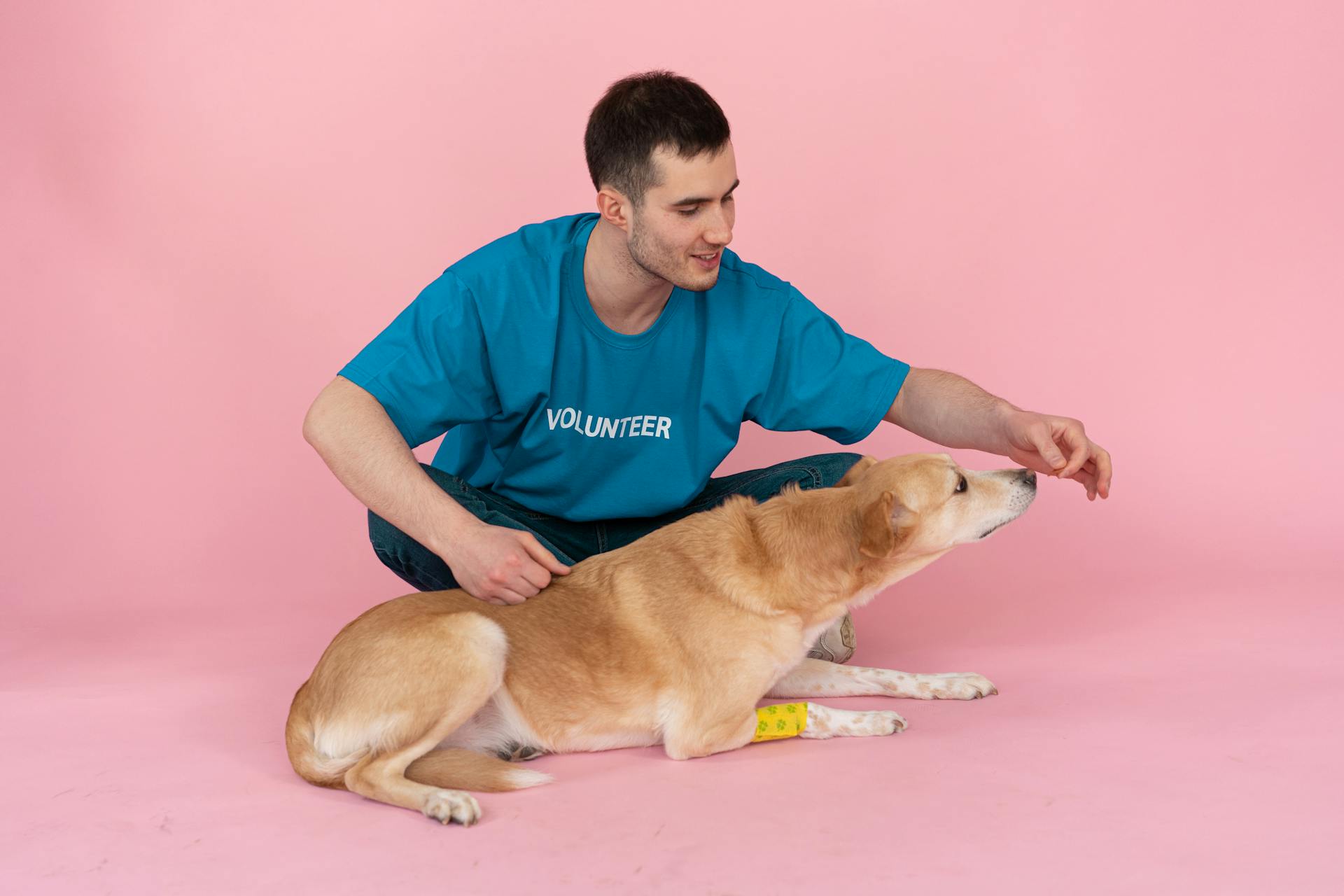
Make sure you aren't overfeeding them at mealtimes and don't give them too many treats. Their short legs can't take the extra weight, and it can exacerbate back problems.
It's essential to choose a high-quality, commercial dog food that meets the nutritional standards of the Association of American Feed Control Officials (AAFCO).
Consult with your veterinarian to determine the best food and diet for your dog based on their individual needs, including their age and activity level.
Their diet should be high in protein, and it's a good idea to mix it up to keep it interesting for them.
Keep track of the treats you give them, as snack calories count too, and don't accidentally overfeed them.
Discover more: Are Dachshunds High Maintenance
Training and Exercise
Training and exercise are crucial for Dachshunds, and with the right approach, they can thrive.
Dachshunds are intelligent and confident dogs that respond well to positive reinforcement training, which uses treats, toys, and praise to motivate them.
Recommended read: Dachshund Crate Training
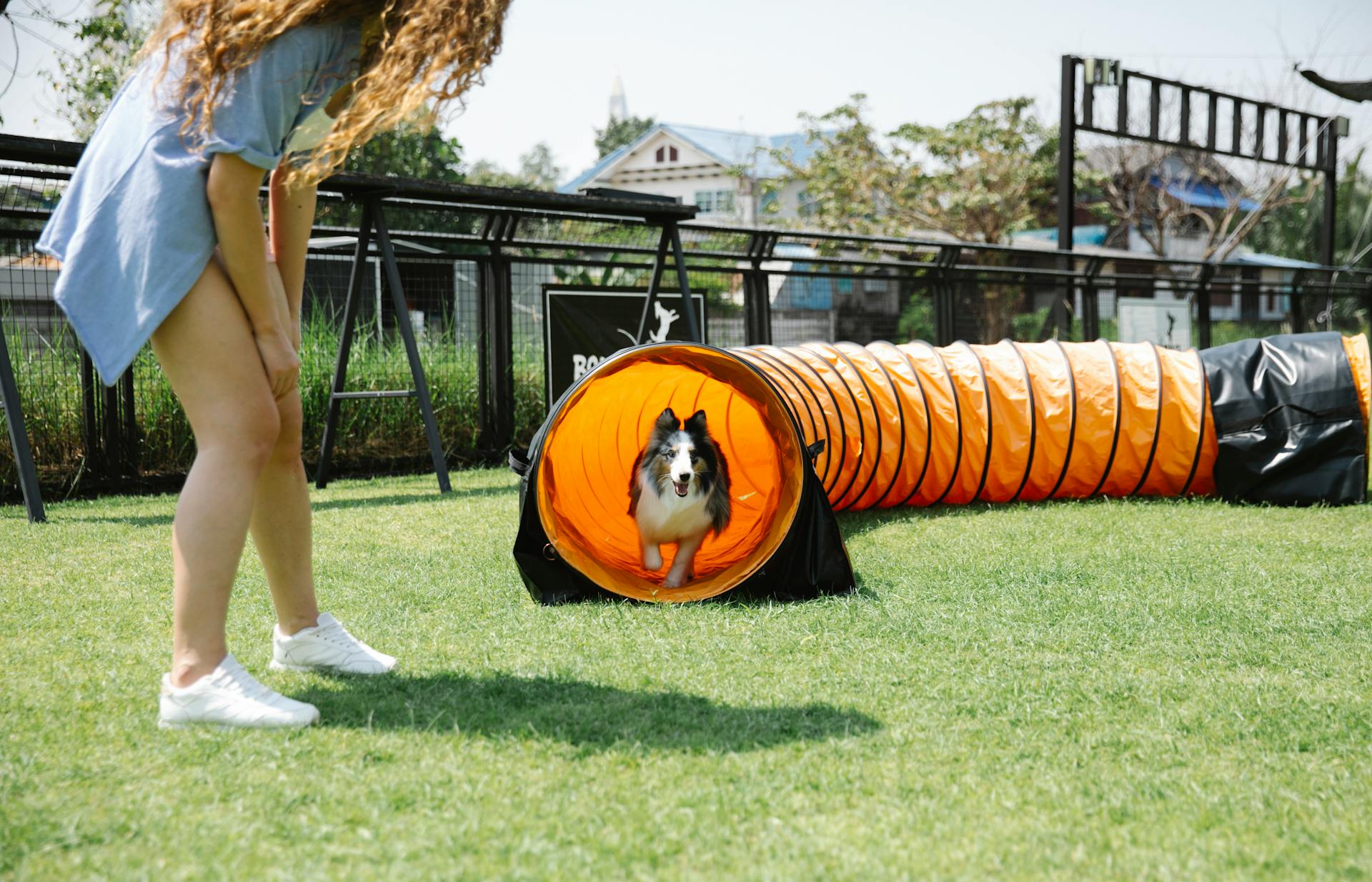
Short training sessions are best, as they can get distracted by sounds and smells, so it's essential to keep them focused. Use treats they absolutely love to keep them excited about learning.
Dachshunds have a powerful nose and respond well to scent-based games like hide-and-go-seek with treats, giving them much-needed mental stimulation.
Early socialization is vital for Dachshunds, starting from puppyhood, to help them get used to having other people and dogs around. Group obedience classes are a great place to start.
Dachshunds have moderate energy levels and need daily walks of about 30 minutes at an easy-going speed, along with daily play and training. Avoid intense exercises that put stress on their fragile backs.
Dachshunds love participating in sports like Earthdog, where they hunt rodents in tunnels, and can also enjoy digging and hunting small animals in a yard.
History and Etymology
The name dachshund is of German origin and means "badger dog" from the words "Dachs" (badger) and "Hund" (dog, hound). The German pronunciation is [ˈdaks.hʊnt].
Check this out: Dachshunds Badger Hunting

In Germany, dachshunds were originally known as "badger dogs" and were bred to hunt badgers. Their narrow, low-to-the-ground body was perfect for digging into badger tunnels. They were also bred to have a loud bark to alert their humans whenever they found badgers underground.
Their name was later changed to dachshund, but in modern Germany, the dogs are more commonly known by the short name Dackel.
A fresh viewpoint: Dachshunds Were Originally Bred to Hunt Which Animal
History and Etymology
The Dachshund's name is of German origin, and it literally means "badger dog" from the words "Dachs" (badger) and "Hund" (dog or hound).
Dachshunds originated in Germany over 600 years ago, where they were bred to hunt badgers and other small prey. They were originally called "badger dogs" or "hole dogs" in Germany.
Their narrow, low-to-the-ground body was perfect for digging into badger tunnels, and their confident, brave personalities made them mighty hunters. They were also bred to have a loud bark to alert their humans whenever they found badgers underground.
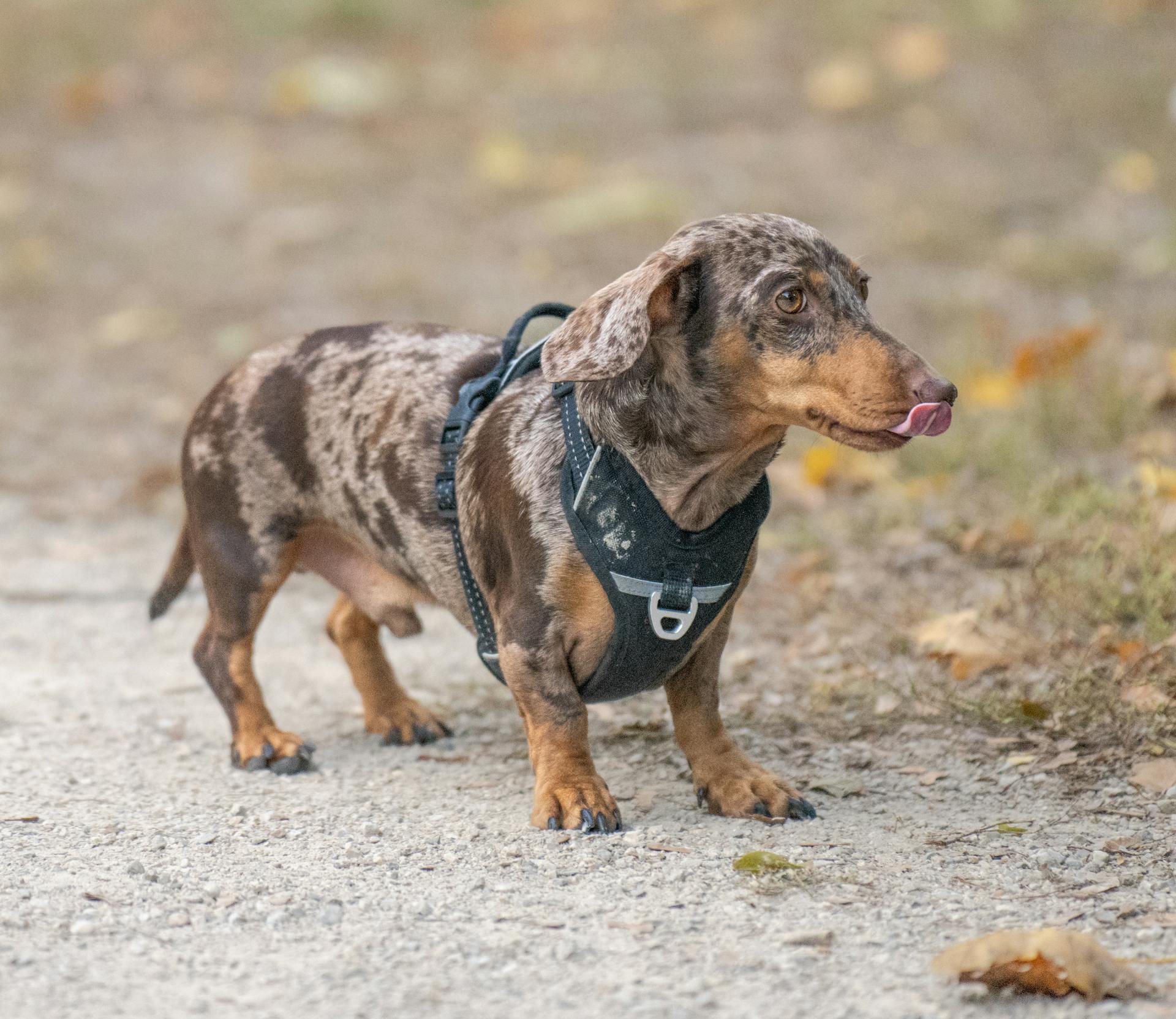
In the 18th and 19th century, Dachshunds were used to hunt badgers and wild boar, and they were crossed with terrier and spaniel breeds to gain certain hunting qualities and coat types.
The first verifiable references to the Dachshund came from books written in the early 18th century, where they were named the "Dachs Kriecher" or "Dachs Krieger", meaning "badger crawler" or "badger warrior".
The original German Dachshunds were larger than the modern full-size variety, weighing between 14 and 18 kg (31 and 40 lb), and originally came in straight-legged and crook-legged varieties.
Dachshunds were first recognized by the American Kennel Club in 1885, but during World War I, they were used in German propaganda, and the AKC temporarily rebranded them as Badger Dogs or Liberty Pups in the United States.
In modern Germany, the dogs are more commonly known by the short name Dackel, while working dogs are less commonly known as Teckel.
Symbol of Germany
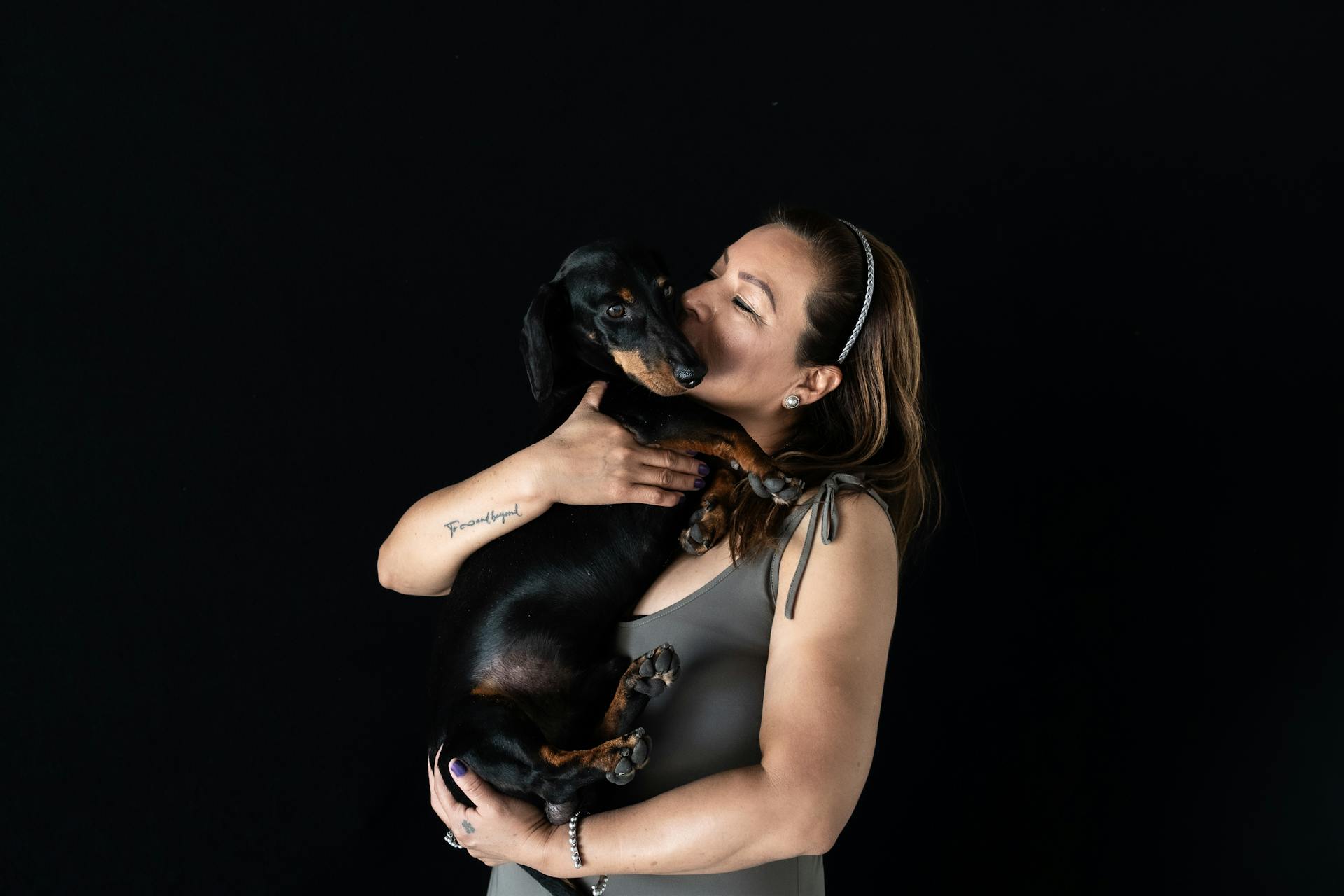
Dachshunds have traditionally been viewed as a symbol of Germany.
Political cartoonists commonly used the image of the dachshund to ridicule Germany.
During World War I, the dachshund's popularity in the United States plummeted because of this association.
As a result, they were often called "liberty hounds".
Kaiser Wilhelm II and German field marshal Erwin Rommel were known for keeping dachshunds.
The stigma of the association was revived to a lesser extent during World War II.
For another approach, see: Dachshunds in Germany
Health Risks and Life Expectancy
Dachshunds have a lifespan of 12-16 years, but they're prone to some health issues that can affect their quality of life.
Intervertebral disc disease is one of the most common health problems Dachshunds face, affecting up to 25 percent of the breed at some point. This can lead to paralysis if not treated promptly.
Bloat is another life-threatening condition that can occur in Dachshunds, where the stomach twists on itself. Symptoms include pain, pacing, drooling, and vomiting.
Here are some common health issues Dachshunds face:
- Intervertebral disc disease
- Bloat
- Deafness
- Luxating patella
- Epilepsy
- Eye problems (cataracts, glaucoma, or progressive retinal atrophy)
The average life expectancy of a Dachshund is 12-14 years, but this can vary depending on factors like genetics, diet, and lifestyle.
Health Risks
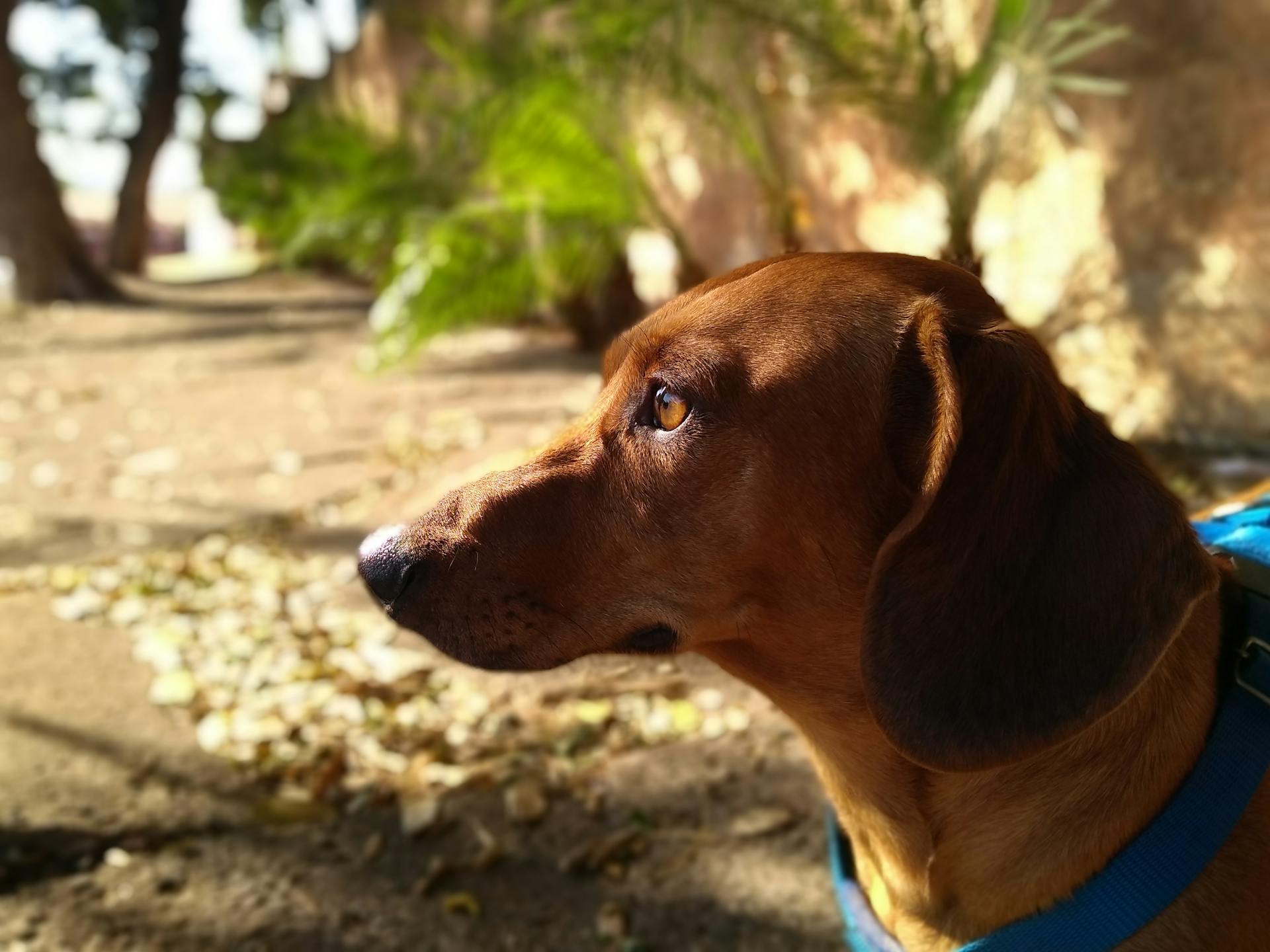
Dachshunds are prone to certain health issues that can affect their quality of life. Intervertebral disc disease is a common issue that can lead to paralysis if not treated promptly.
Dachshunds can also develop bloat, a life-threatening condition where the stomach twists on itself. Symptoms include being in pain, pacing, drooling, trying to throw up but not being able to, or licking their lips.
Progressive retinal atrophy is another issue that can cause blindness. Cataracts and glaucoma may be treated with surgery, but progressive retinal atrophy is not treatable.
Deafness is also a concern, especially in dappled-coated Dachshunds. While there is no cure, deaf pups can live a happy life.
Here are some common health issues that Dachshunds may face:
- Intervertebral disc disease
- Bloat
- Progressive retinal atrophy
- Deafness
It's essential to work with a reputable breeder who screens for these issues and provides test results for the litter and parents.
Life Expectancy
The average life span of a Dachshund is 12 to 14 years, but let's dive deeper into the life expectancy of this beloved breed.
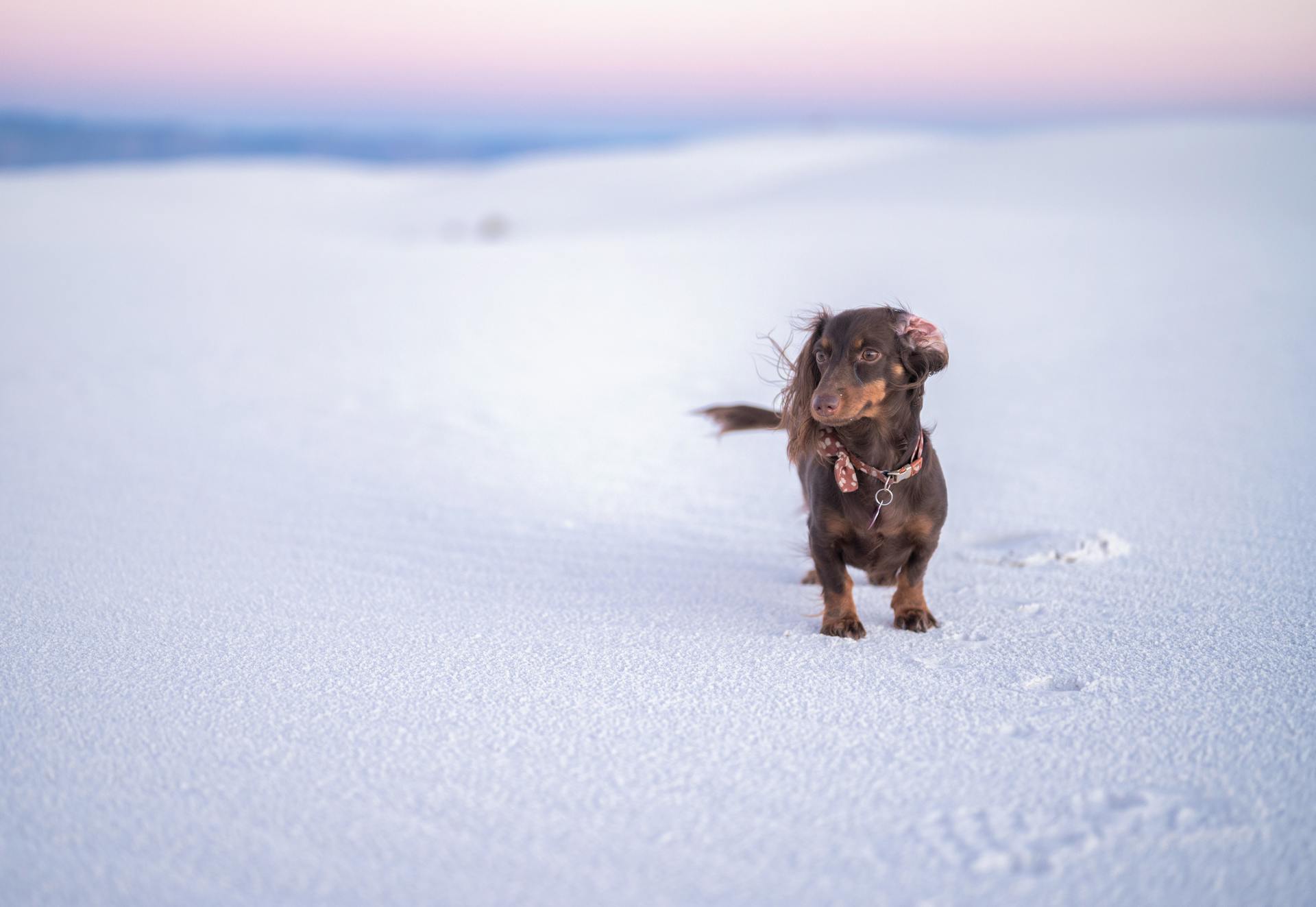
A 2018 study in Japan put the life expectancy of Miniature Dachshunds at 13.9 years, which is higher than the overall average.
In contrast, a 2024 study in the UK found that the life expectancy of the Miniature Dachshund is actually 14 years, making them one of the longest-living Dachshund types.
Interestingly, a 2024 Italian study found that the life expectancy of the breed as a whole is 11.5 years, which is lower than the overall average.
Unfortunately, a 2005 Swedish study found that 28% of Dachshunds died by the age of 10, which is higher than the overall rate of 35% of dogs dying by the age of 10.
Popularity and Recognition
Dachshunds are one of the most popular dogs in the United States, ranking 12th in the 2018 AKC registration statistics.
Their popularity can be attributed to their adaptability, making them a great fit for urban and apartment dwellers.
Dachshunds rank among the top 10 most popular breeds in 76 of 190 major US cities surveyed by the AKC.
Organized local dachshund clubs exist in most major American cities, including New York, New Orleans, Portland, Los Angeles, and Chicago.
Comparison and Similar Breeds

If you're considering bringing a dachshund into your family, you may be wondering how they compare to other breeds. One breed that's often mentioned alongside dachshunds is the basset hound.
Dachshunds and basset hounds share some physical similarities, including their short stature and long bodies. They also both have short coats that require regular grooming.
In terms of temperament, both breeds are known for being loyal and affectionate with their families. However, dachshunds tend to be more energetic and playful than basset hounds.
Similarly Sized Breeds
If you're looking for breeds that are similarly sized to the Dachshund, I've got some great options to consider. The Doxie Scot, for example, is 93% similar in size to the Dachshund.
One breed that's particularly close in size is the Sealyham Terrier, which shares 92% similarity with the Dachshund. I've seen these two breeds side by side, and they're almost identical in terms of their compact, energetic builds.
A fresh viewpoint: Different Size Dachshunds
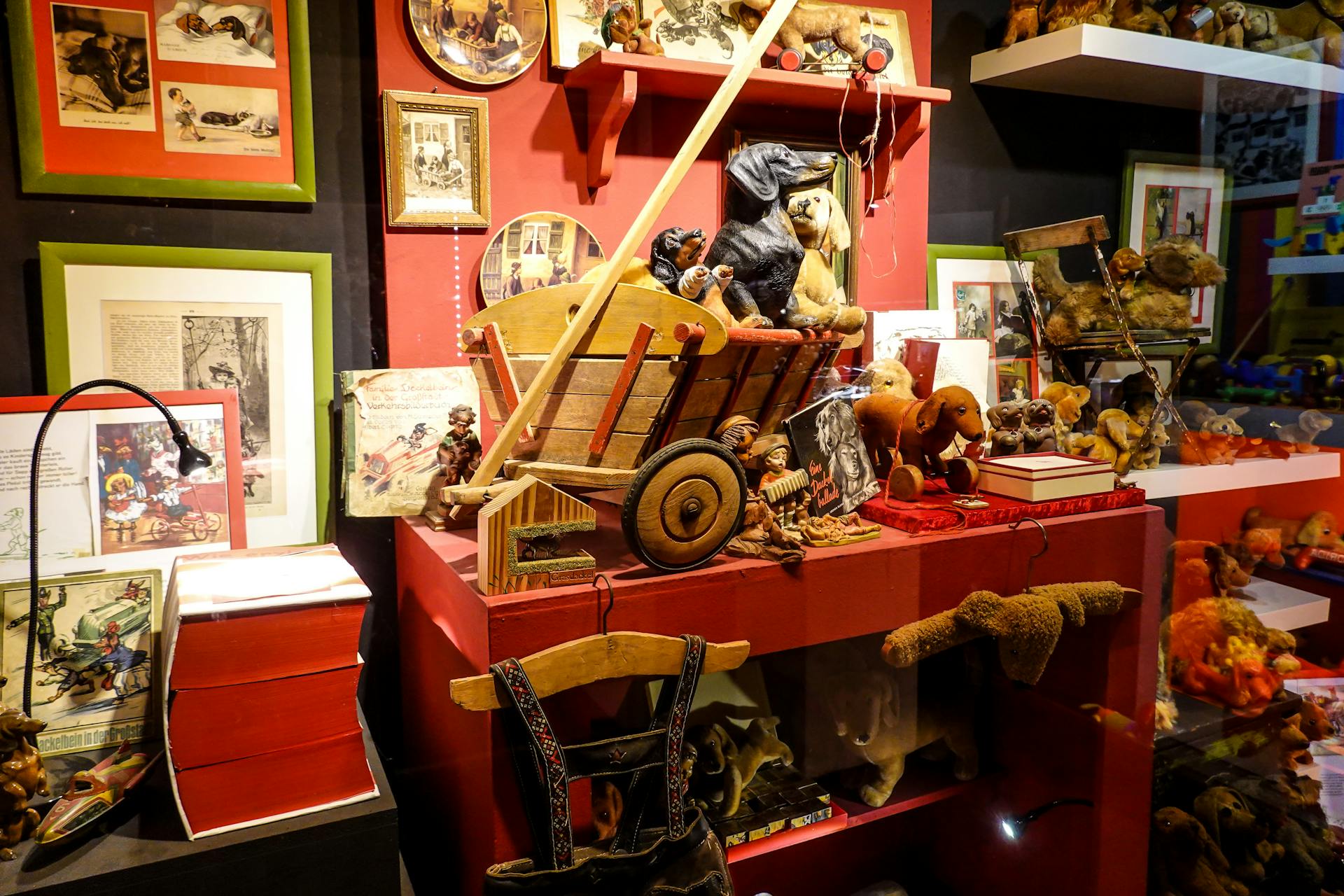
Another breed that's worth mentioning is the Dandie Dinmont Terrier, which is also 92% similar in size to the Dachshund. These breeds are both known for their lively, curious personalities.
If you're looking for something a bit more unique, you might consider the Silkshund, which is 90% similar in size to the Dachshund. This breed is a cross between a Silky Terrier and a Dachshund, and it's known for its beautiful, silky coat.
For those who want a breed that's a bit more... interesting, you might consider the Scorkie, which is 89% similar in size to the Dachshund. This breed is a cross between a Scottish Terrier and a Dachshund, and it's known for its feisty, affectionate personality.
Here are some similarly sized breeds to the Dachshund:
- Doxie Scot (93% similar)
- Sealyham Terrier (92% similar)
- Dandie Dinmont Terrier (92% similar)
- Silkshund (90% similar)
- Scorkie (89% similar)
Dackel Versus Teckel
In Germany, dachshunds are widely referred to as Dackel, both singular and plural. This is a common term used among locals.
Dachshunds are also known as Teckel among hunters. This is because they were originally bred for hunting, and their skills in this area are highly valued.
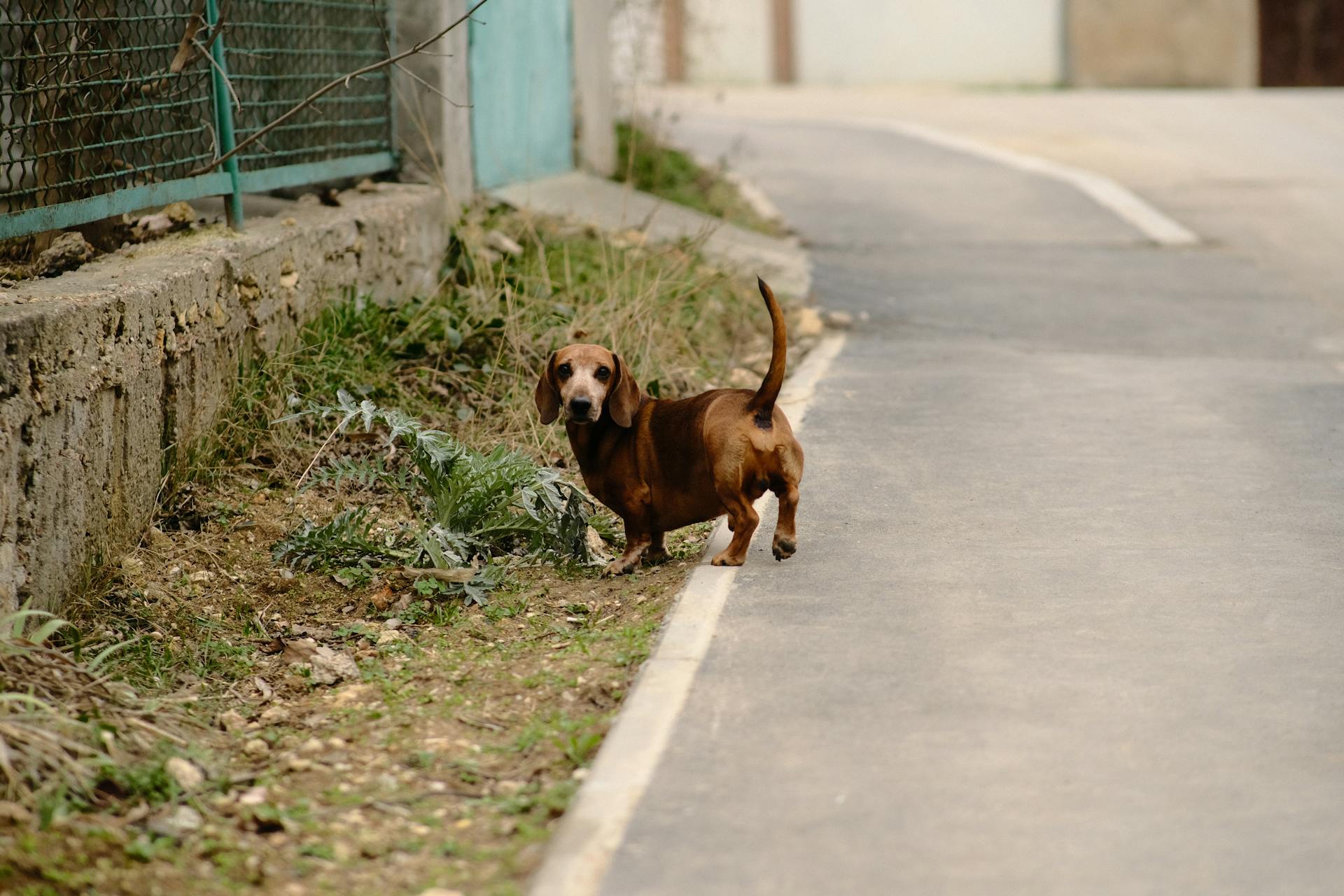
There are two types of dachshund breeding: one focused on family dogs and another on hunting dogs, known as jagdliche Leistungszucht or Gebrauchshundezucht.
Artists have long been fascinated by dachshunds, as seen in works like Adolf Eberle's "Die Dackelfamilie mit Jäger und Magd" and Jean-Baptiste Oudry's "Dachshund with Gun and Dead Game".
Some notable artworks featuring dachshunds include "How will it end?" and "Curious Dachshund Puppies & A Frog" by Carl Reichert.
Here are some notable artworks featuring dachshunds:
- Die Dackelfamilie mit Jäger und Magd (The Dachshund family with Hunter and Maid) by Adolf Eberle
- Jean-Baptiste Oudry – Dachshund with Gun and Dead Game, 1740
- How will it end? Wie wird es enden? c. 1900.
- Curious Dachshund Puppies & A Frog. Carl Reichert.
Frequently Asked Questions
What are the pros and cons of Dachshunds?
Dachshunds are loyal and playful companions, but their strong prey drive and tendency to dominate may not suit households with small pets or multiple dogs. They also require careful consideration due to their digging habits and potential plant and yard damage
Are Dachshunds expensive?
Yes, owning a Dachshund comes with a significant upfront cost and ongoing expenses, with adoption fees ranging from $150 to $3,500 and monthly care costs averaging $155 to $855+. While the costs may be higher than expected, many find the rewards of Dachshund ownership well worth the investment.
What kind of dog is a weiner?
A "wiener" is a colloquial term for a Dachshund, a breed of dog known for its long, narrow body. This nickname likely originated from the dog's resemblance to a hot dog.
Is a wiener dog a good pet?
Are Dachshunds good pets? Yes, they can make great pets for first-time owners, being playful, friendly, and loving mental challenges
Why is it called wiener dog?
The Dachshund's nickname "wiener dog" comes from its German heritage and the fact that it was bred to hunt badgers in underground burrows, similar to those found in Vienna, Austria. This etymology is a nod to the breed's origins in Germany, where Vienna was a significant city.
Featured Images: pexels.com
